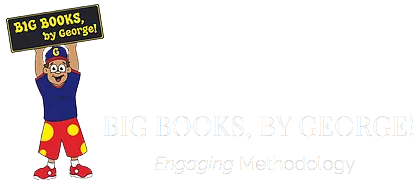The Power of Big Books in Classroom Education
Education has always been the cornerstone of personal and societal growth, and the right tools can significantly enhance the learning experience. Among these tools, big books have emerged as a vibrant asset in classrooms, especially for younger learners. These oversized reading materials are not just larger-than-life in their dimensions, but also in their capacity to captivate, instruct, and foster a love for reading. As we delve into the world of big books for classroom learning, let’s uncover the best picks that have transformed educational settings and how they continue to play a pivotal role in a child’s academic development.
Embracing Size for Better Visibility
Let’s face it, size matters in the educational world, particularly when it comes to reading in a group setting. Big books for classroom use are designed with this in mind, providing large, easily visible print and pictures that ensure all students, regardless of where they are seated, can engage with the content. This characteristic is crucial for maintaining students’ attention and ensuring that everyone is on the same page—quite literally.
Moreover, the sheer physical presence of a big book commands attention. Teachers find that when they introduce these large-format volumes, students are naturally intrigued and more inclined to participate in the reading activity. This initial interest can be a vital step in fostering a lifelong passion for reading.
Enhancing Group Learning Dynamics
In the heart of a lively classroom, big books act as a focal point around which students can gather and interact. They’re especially beneficial for teachers looking to promote group reading sessions. By utilizing big books for classroom settings, educators can facilitate a shared reading experience, allowing students to follow along with the text as the teacher reads aloud.
This communal aspect of reading is not just about following words on a page; it’s an interactive experience. Students can take turns reading aloud, point out interesting aspects of the illustrations, and discuss the storyline together. This collaborative approach not only improves reading skills but also builds social skills and teamwork among students.
Cultivating Interest with Engaging Content
The content of big books is just as important as their size. Selecting titles that resonate with students and relate to their experiences is key to maintaining their interest. The best big books for classroom use are those that cover a wide array of subjects, from daily routines to fantastical narratives that spark the imagination—within the bounds of a school-appropriate setting, of course.
Teachers should seek out big books that feature engaging characters, exciting plots, and valuable lessons. These books should also be culturally diverse, providing windows into different worlds and reflecting the varied backgrounds of the students who read them. By ensuring the content is relatable and stimulating, educators can create an inviting reading environment where every student feels represented and eager to learn more with https://www.bbbg.org/.
Supporting Literacy with Repetitive and Rhymic Texts
When it comes to early literacy, repetition is a powerful tool. Big books that utilize repetitive phrases and rhythmic texts help students anticipate and recognize patterns in language, an essential step in learning to read. This repetition also reinforces vocabulary and sentence structure, making these books not just fun to read but educational powerhouses.
Additionally, the rhythm found in many big books can turn reading into a musical experience, with the cadence acting like a beat that students can follow. This makes the act of reading more enjoyable and memorable, and before long, students will be reciting lines and grasping language concepts with greater ease.
Fostering Independence with Interactive Features
Many big books are not passive reading materials; they invite interaction. Whether it’s through flaps that can be lifted to reveal hidden images, textures that can be felt, or cut-outs that play with the book’s format, these interactive elements can transform reading from a spectator sport into an active exploration.
This interactive approach encourages students to become investigators, eagerly awaiting their turn to delve into the book’s secrets. The physical act of moving parts of the book can also aid in fine motor skill development, making big books a multifaceted tool in a child’s education.
Conclusion
Big books in the classroom serve as much more than just large-scale reading materials. They are catalysts for collective discovery and active participation, making them a staple for an interactive and inclusive learning environment. By bringing text and images to life on a grand scale, these books ensure that every student is engaged, fostering a sense of community as children explore stories and subjects together. The benefits of big books extend beyond their size; they promote literacy, comprehension, and a shared joy of learning that can resonate with students long after the class session ends.
The true value of big books lies in their ability to transform the classroom into a collaborative hub where learning is both seen and felt. This is where education transcends the traditional, allowing students to not just absorb information, but to connect with it in a tangible way. For educators, incorporating big books into their teaching repertoire means nurturing a learning space where curiosity is ignited, knowledge is a collective pursuit, and every student is afforded the chance to participate and grow in their educational adventure.
Read More:
